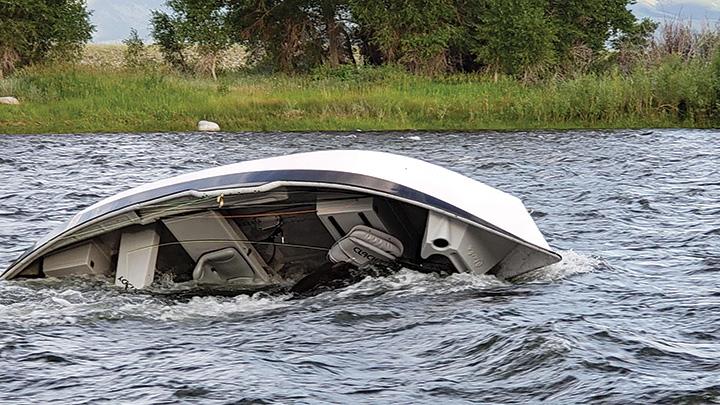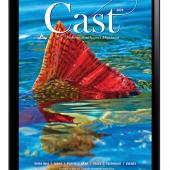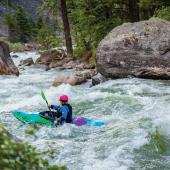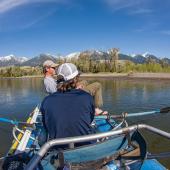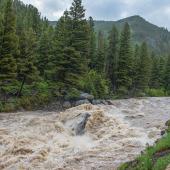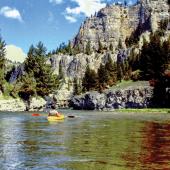Safety First
Water is a destructive element. Places like Bighorn Canyon, with thousand-foot cliffs carved by water, are a testament to its constant power. While we think of southwest Montana’s rivers as our safe backyard playground, each year those who do not heed the warning of these waterways pay the price. Follow these tips to avoid such a fate.
Wading
There is nothing more iconic than wade-fishing one of the great rivers of Montana. People come from all over the world to tempt these hallowed waters, but there are a few rules of the river to keep you safe. First and foremost, know your capabilities and the conditions. Most rivers are swift with rocks like greased bowling balls. Wading thigh-deep during spring runoff on the Madison is only for the strong, brave, and reckless. Most fish can be caught without deep wading and most people who get in trouble put themselves in a bad position.
Every experienced wader I know has a quality wading staff. This third point of contact is often the difference between staying standing and getting wet. Get a quality staff that both folds out of the way when not in use, and can also bear the weight of really leaning on it.
Wear a self-inflating life jacket. These inflate with a CO2 cartridge when submerged and are extremely slim. They stay out of your way while fishing but inflate when you need them most.
We all know that felt wading shoes can carry aquatic species between waterways, but they are ideal for sticking to the bottom. Use them when you can and remember that they are illegal in the Yellowstone Park. Studs, aluminum bars, and even svelt are great options for unsteady waders.
If you’re wearing waders, wear a tight wading belt. This will keep most of the water out of your waders if you do take a fall. With no belt, those waders fill up and act as an anchor.
Rowing
Rowing a raft or driftboat on the waters of Montana can be almost as much fun as the fishing. A boat can give you freedom to explore and see some great places, but it’s also an avenue for catastrophe if you aren’t careful.
As with wading, most people get in trouble by not knowing their capabilities. The high, big water of spring runoff is a dangerous time and things can happen fast. Unless you’re an expert, and you probably aren’t, stay away from the rivers when they’re swollen.
Many of the local rivers like the Big Hole and Yellowstone change drastically each year. Know which channels are free of obstructions before you launch. Check with your local fly shop—they should be able to fill you in.
When the water is high and fast, wear life jackets. Montana law states that adults over 14 are not required to wear PFDs (although they must be in the boat), but swallow your pride and keep them on or at least within reach. It might just save your life.
Put-in and take-out are surprisingly dangerous times. Most accidents happen getting in and out of the boat. Pay particular attention and remember that slow is smooth and smooth is fast.
John Way owns the Tackle Shop in Ennis.


